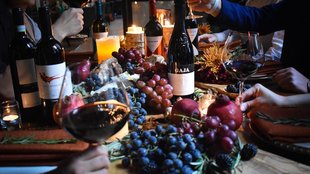Gaja: Wine Styles, 10 Great Bottles to Buy in 2025, Prices
One of the biggest names in the Italian wine industry, Gaja has transformed Italian viticulture and winemaking through radical (often controversial) innovations.
Gaja’s prestigious wines made in Piedmont and Tuscany have captivated famous wine critics and are avidly sought-after by collectors around the world.
Let’s journey through the inspiring story of the Gaja winery, it’s beautiful vineyards, unique winemaking practices, and the best Gaja wines to buy in 2024. You’ll also discover a super-easy way to invest in these exceptional wines.
Further reading
- Diversify your portfolio by placing your bets on fine wines. Here's a complete Fine Wine Investment Guide to help you get started.
- Need a lucious red wine to celebrate your next event? Try out these mouth watering Merlots, or a sultry Shiraz.
A Quick Intro To The Gaja Winery
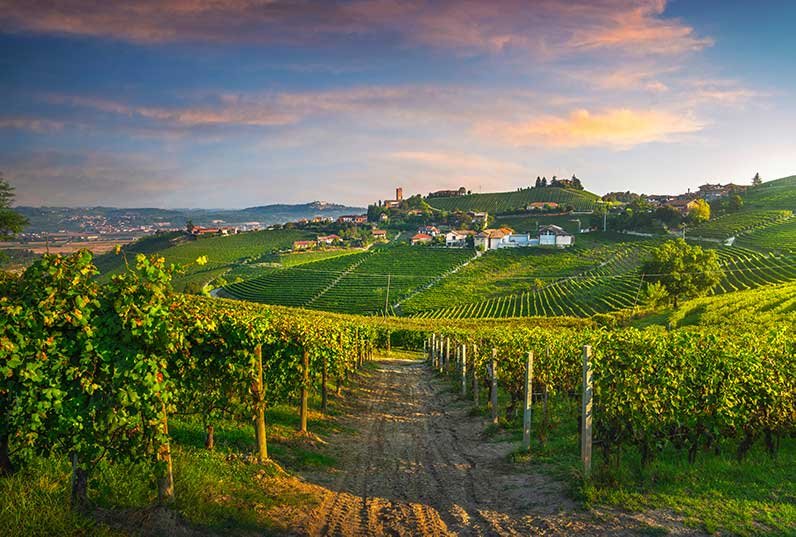
This Italian winery is situated in the Langhe area of Piedmont, Italy.
Founded in 1859, the Gaja winery has been operated by the Gaja family for five generations, and is now managed by Angelo Gaja and his daughters.
The Gaja family has 250 acres of estate owned vineyards in Piedmont. These are situated in Barbaresco and Treiso in the Barbaresco district, and the Serralunga d’Alba and La Morra districts of Barolo.
The winery produces a range of fine Italian wines in Piedmont (Langhe) and Tuscany, including Barbaresco,Barolo, and Brunello di Montalcino wines. The estate also produces grappa (brandy made from Nebbiolo grape pomace.)
In addition to it’s great red wines, Gaja also produces delicious white wines from the Vermentino, Viognier, Sauvignon Blanc, and Chardonnay grape varieties.
A Brief History Of the Gaja Winery: A Legacy of Over 150 Years
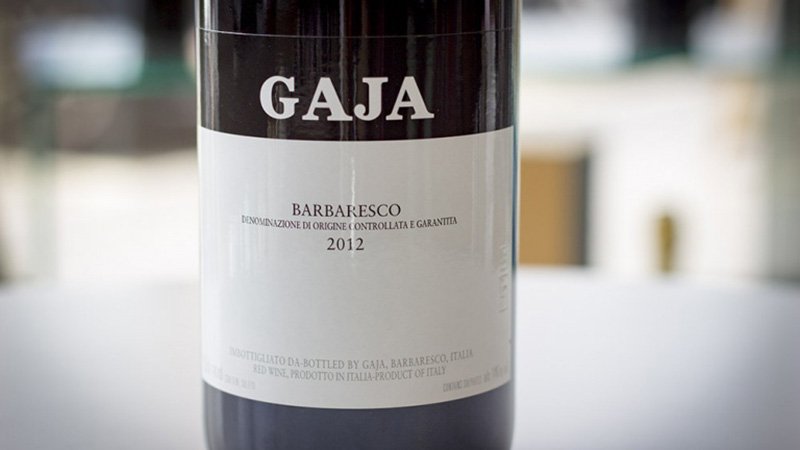
In the 17th century, the Gaja family came to Italy from Spain and started a tavern. By 1859, Giovanni Gaja founded the winery and started bottling his wines, and supplied them to the Italian army in Abyssinia.
In 1937, Giovanni’s grandson, Giovanni Gaja (Angelo Gaja’s father), labeled his wines “Gaja” and acquired three Crus - Sorì San Lorenzo, Sorì Tildìn, and Costa Russi.
Although the winery grew under each generation, it was the fourth-generation winemaker of the Gaja family - Angelo Gaja - who made some pioneering changes (which often ran into controversies.)
- In the 1960s and 70s, Angelo introduced breakthrough practices like green harvesting, malolactic fermentation, and the use of a new French oak barrique.
- He introduced single-vineyard wines like Sori San Lorenzo, Sori Tilden, and Costa Russi.
- In 1977, he founded Gaja Distribuzione - a company that imports and distributes wine and wine accessories from other countries.
- From 1978, Angelo started replanting the estate owned vineyards with French grape varieties, including Cabernet Sauvignon, Chardonnay, and Sauvignon Blanc (despite opposition from his father, Giovanni, and against Piedmont’s varietal protocol.)

His first Cabernet Sauvignon-based red wine was named “Damargi,” meaning “what a pity,” which is believed to be Giovanni’s reaction to the French grapes planted on his Italian soils!
- He released the Barolo Sperss red wine in 1992.
- In 1994 and 1996, Angelo bought two wine estates of Tuscany - Pieve Santa Restituta in Montalcino (for his Brunello di Montalcino wines) and the Ca’Marcanda estate in Castagneto Carducci, Bolgheri.
- In 1996, Angelo intentionally declassified most of his DOCG Barbaresco and Barolo wines to the lower DOC classification Langhe Rosso because he didn’t want his wines to be termed “regular.”
So, no wonder Angelo is known as the “undisputed king of Barbaresco!”
In 2004, Angelo passed the reins of the winery to his daughters, the fifth generation of the Gaja family - Gaia and Rossana Gaja. Under Gaia’s supervision, the Barbaresco and Barolo wines were reclassified as DOCG.
The Magnificent Vineyards Of Gaja

The Gaja family owns the finest Italian vineyards located in Piedmont and Tuscany. While most Piedmont vineyards are planted with the Nebbiolo grape variety, some vineyards have French grapes.
The Damargi vineyard in Barbaresco are planted with Cabernet Sauvignon, the Gaia and Rey vineyard with Chardonnay, and the Alteni di Brassica vineyard with Sauvignon Blanc.
In Tuscany, the Pieve Santa Restituta vineyard is planted with Sangiovese, while the Ca’Marcanda vineyard has international grape varieties like Cabernet Sauvignon, Cabernet Franc, Merlot, and Syrah.
The famous Ca’Marcanda estate in the Castagneto Carducci region of Bolgheri has unique dual soils - Terre Brune (dark earth) and Terre Bianche (white earth). The soils are a perfect mix of loam, clay, and sand with balanced quantities of limestone and pebbles.
The Winemaking Techniques Of Gaja
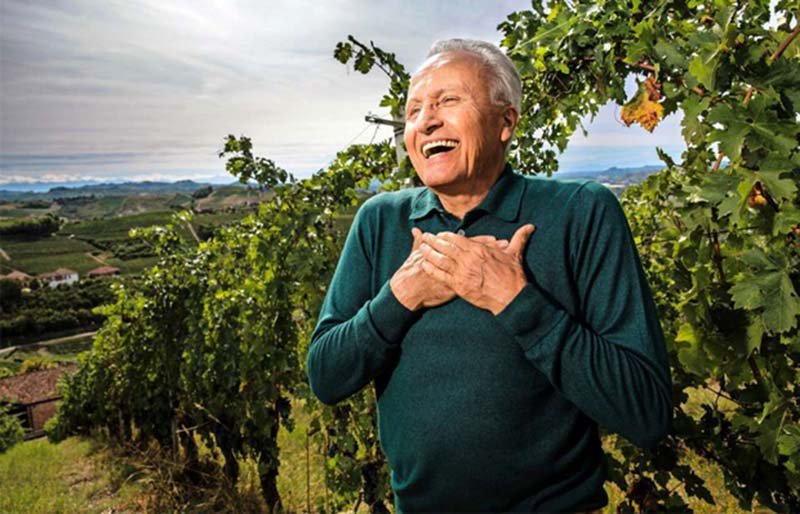
The Gaja family uses the fruit of their own vineyards for winemaking. In the winery, the Gaja family uses a combination of French and Italian winemaking techniques:
- Gaja blends its Nebbiolo with a bit of Barbera to enrich the wine’s flavor.
- The maceration periods are kept longer and the malolactic fermentation stage is short.
- The Gaja family ages the wine in a combination of large oak barrels and new barrique. Aging in barriques adds complex smoky flavors to the wine.
Let’s take a quick look at the exotic wines produced by the Gaja winery.
The Delicious Gaja Wines

The Gaja winery produces 18 unique wines in Piedmont and Tuscany (besides three grappas named Sperss, Darmagi, and Gaia & Rey.)
A. Barbaresco
- Gaja Barbaresco DOCG: The flagship Gaja wine, this Barbaresco DOCG wine is a 100% Nebbiolo wine aged for two years.
- Costa Russi: A DOCG red wine made from 100% Nebbiolo grapes
- Sorì Tildìn: This Barbaresco wine is a rich and concentrated single vineyard wine made from Nebbiolo grapes.
- Sorì San Lorenzo: The Sori San Lorenzo is a robust and masculine Nebbiolo wine.
B. Barolo
- Sperss: The most popular Gaja Barolo, Barolo Sperss is a 100% Nebbiolo wine known for its exceptional aging potential.
- Conteisa (Conteisa Cerequio): It is a Langhe DOC wine made entirely from Nebbiolo grapes.
- Dagromis: It is a Barolo DOCG wine made from a blend of the Nebbiolo grapes from the La Morra and Serraunga vineyard plots. It is named after the Gromis family, who owned the La Morra vineyard in the 19th century.
C. Tuscan Wines
Gaja’s Tuscan wines are produced in the two Tuscany estates - Pieve Santa Restituta (in Montalcino) and Ca'Marcanda (in Bolgheri.)
- Rennina: This Brunello di Montalcino is a Sangiovese wine produced in the Pieve Santa Restituta estate.
- Sugarille: Another Brunello di Montalcino from the Santa Restituta estate, this Sangiovese wine is admired for its rich and smooth texture.
- Promis: This red wine is a blend of Merlot, Syrah, and Sangiovese grapes admired for its juicy flavors.
- Magari: This sleek red wine is a blend of Cabernet Franc, Cabernet Sauvignon, and Petit Verdot.
- Carmacanda: Carmacanda is a dense red wine produced from Cabernet Sauvignon and Cabernet Franc grape varieties.
- Vistamere: A smooth and tangy white wine made from the Vermentino, Viognier, and Fiano grapes
D. Other Gaja Wines
- Darmagi: The Darmagi DOC wine is a blend of 95% Cabernet Sauvignon, 3% Merlot, and 2% Cabernet Franc.
- Gaja Langhe Sito Moresco: A 35% Nebbiolo, 35% Merlot, and 30% Cabernet Sauvignon wine, the Gaja Langhe Sito Moresco is known for its concentrated fruit flavors.
- Gaia & Rey: A 100% Chardonnay wine named after Angelo’s grandmother - Clotilde Rey
- Alteni di Brassica: A crisp Sauvignon Blanc wine produced from the fruit of Serralunga d’Alba vineyards in Langhe
- Rossj-Bass: Predominantly a Chardonnay wine with a small portion of Sauvignon Blanc
With a stunning range of wines, from Sito Moresco to fine Brunello di Montalcino, it may be hard for you to choose the best!
So, we have compiled a list of the best Gaja wines for you.
The Best Gaja Wines To Buy In 2024 (Including Tasting Notes, Prices)
Here are the top 10 Gaja wines worthy of your collection:
1. 2013 Gaja Sori Assortment Case Langhe, Piedmont, Italy
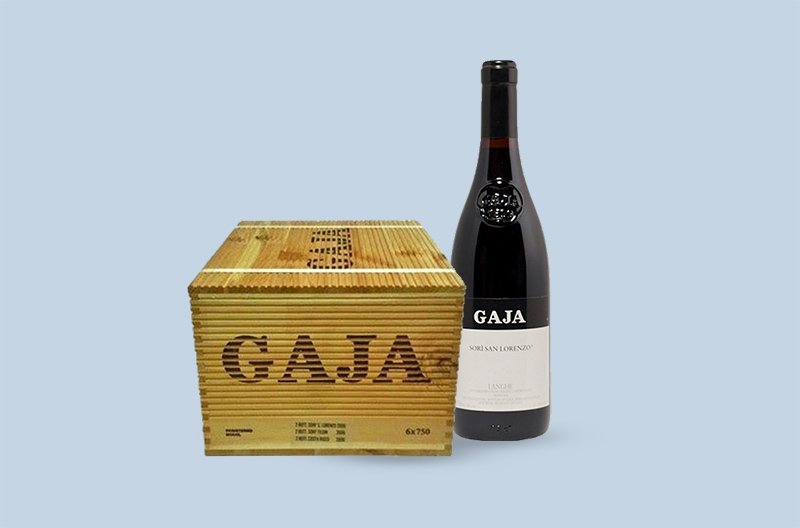
The 2013 Langhe Assortment Case includes two Langhe Sori Tildin, two Langhe Sori San Lorenzo, and two Langhe Costa Russi wines. All unique expressions of the Nebbiolo grape, this set is something you shouldn’t miss.
Price of 2013 Gaja Sori Assortment Case Langhe, Piedmont, Italy: $2,943
2. 1981 Gaja Costa Russi Langhe - Barbaresco, Piedmont, Italy
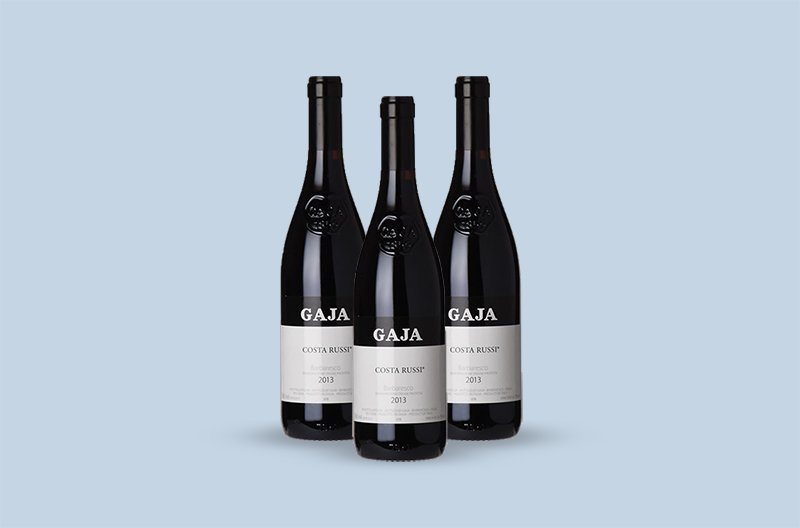
This single vineyard wine showcases authentic Langhe Nebbiolo flavors with an attractive aroma of red fruit. Dry and robust on the palate, this Nebbiolo wine displays high acidity, a firm tannin structure, and a long finish.
Price of 1981 Gaja Costa Russi Langhe - Barbaresco, Piedmont, Italy: $1,276
3. 2015 Gaja Sori Tildin Langhe - Barbaresco, Piedmont, Italy
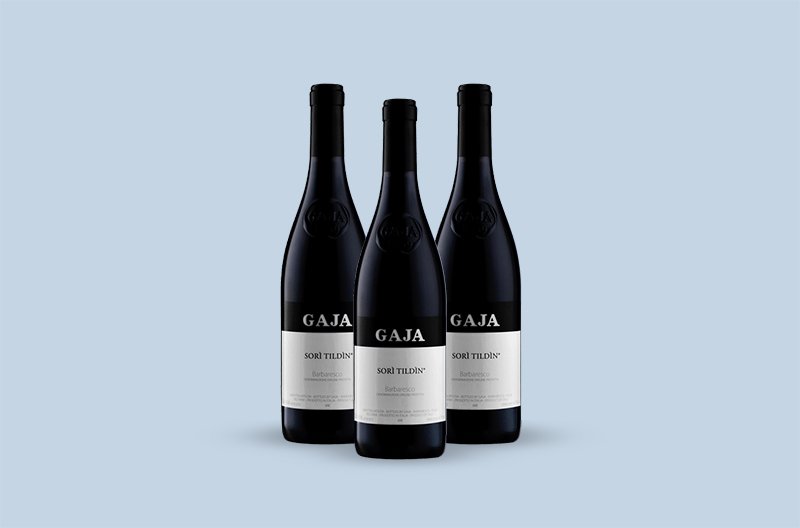
The nose of this single-vineyard Barbaresco has an asphalt and tar aroma that slowly develops into dried strawberry, plum, and citrus fruit scents. This Barbaresco wine is full-bodied, refined, and has balanced tannin levels and acidity on the palate.
Price of 2015 Gaja Sori Tildin Langhe - Barbaresco, Piedmont, Italy: $576
4. 2017 Gaja Sori San Lorenzo Langhe - Barbaresco, Piedmont, Italy
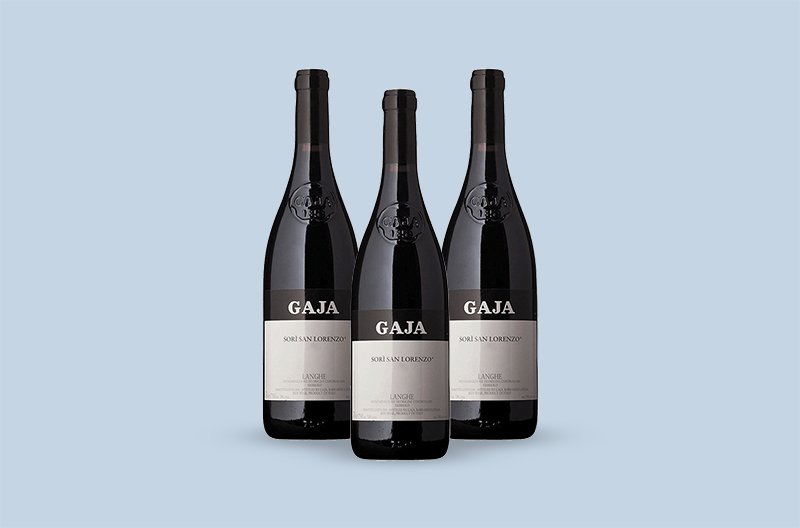
The Sori San Lorenzo single vineyard wine gives off an aroma of fresh rose petals, strawberry, and citrus fruit. The palate of this Langhe Nebbiolo wine is full and linear with a long finish.
Price of 1968 Gaja Sori San Lorenzo Langhe - Barbaresco, Piedmont, Italy: $2,058
5. 1975 Gaja 'Sori Vagnona' Barbera, Piedmont, Italy

Made from Barbera grapes, this dry, medium-bodied red wine has a high acidity that balances its intense fruit flavors. Subtle on the nose, it displays a smooth, lengthy finish on the palate.
Price of 1975 Gaja 'Sori Vagnona' Barbera, Piedmont, Italy: $345
6. 2016 Gaja Sperss Langhe - Barolo, Piedmont, Italy
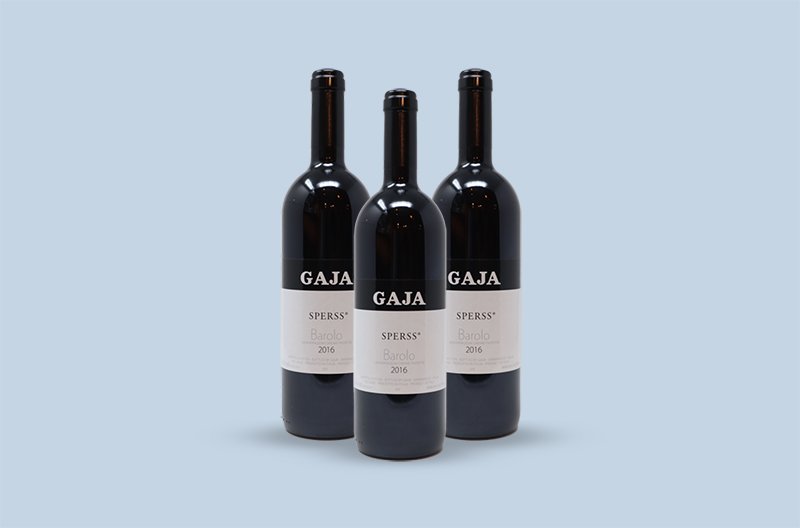
This 2016 Barolo wine from the famous Langhe area has an attractive aroma of tar and earth. The palate has layered notes of plum, cherry, chalk, mineral, and herbs.
Price of 2016 Gaja Sperss Langhe - Barolo, Piedmont, Italy: $388
7. 1991 Gaja Barolo, Piedmont, Italy
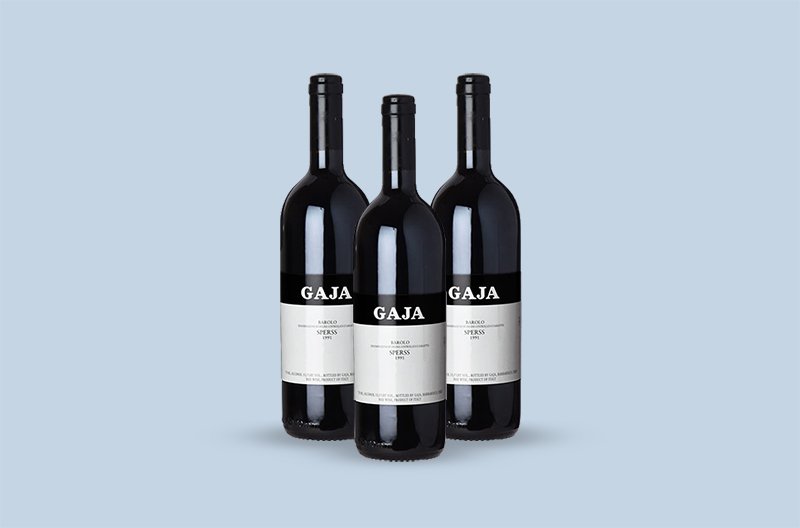
A deep red wine, the 1991 Gaja Barolo gives off black cherry, black plum, Asian spices, licorice, and creosote aromas. The palate has a serious depth, robust tannins, and superb concentration.
Price of 1991 Gaja Barolo, Piedmont, Italy: $300
8. 2010 Gaja Gaia & Rey Chardonnay Langhe, Piedmont, Italy

A delicious white wine, this Chardonnay varietal wine has excellent concentration with impressive honey, wax, and nutty flavors. The nose is fruity with apple, citrus, and tropical fruit aromas.
Price of 2010 Gaja Gaia & Rey Chardonnay Langhe, Piedmont, Italy: $412
9. 2000 Gaja Barbaresco DOCG, Piedmont, Italy
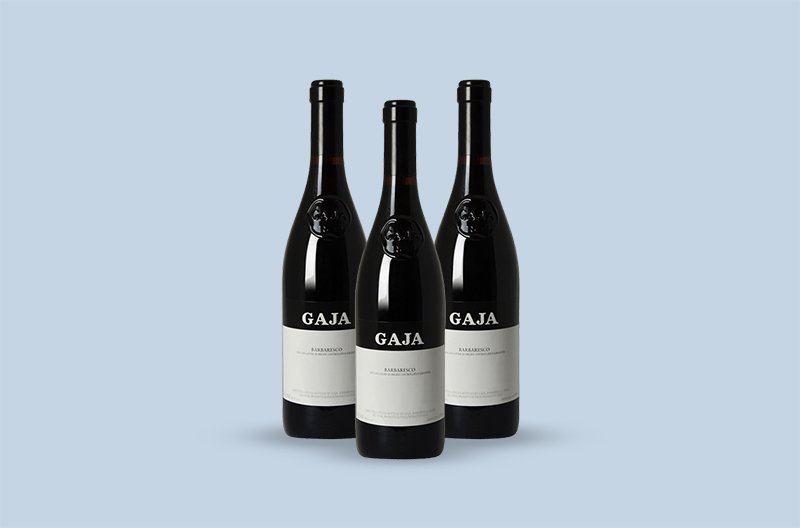
An elegant Gaja Barbaresco DOCG wine, this 2000 vintage gives off aromas of lanolin, rotten roses, violets, orange blossom water, and artisan sponge cake. The palate is complex, silky, and has a perfectly balanced acidity.
Price of 2000 Gaja Barbaresco DOCG, Piedmont, Italy: $355
10. 1999 Gaja Conteisa Barolo DOCG, Piedmont, Italy

The 1999 Gaja Conteisa is one of Italy’s great red wines. It has beautiful licorice, asphalt, and mocha scents. The palate is deep, concentrated, and rounded with great length and soft tannin.
Price of 1999 Gaja Conteisa Barolo DOCG, Piedmont, Italy: $343
Investing In Gaja Wines

The top-notch Gaja wines like the single vineyard Sori San Lorenzo can age for up to 40 years.
It’s a well known fact that the Gaja family focuses more on quality than quantity - the reason why their most sought-after wines are produced in limited quantity. It is also evident in the fact that they declassify some wines and sell off some lower-quality vintages.
These Italian wines are held in high regard by serious collectors and command high prices in the secondary market.
The famous Gaja Barbaresco DOCG saw a price increase of 33% in only 12 months of its release. And, the price of the 1968 Gaja Sori San Lorenzo single-vineyard wine increased by 405% in a single year (March 2020 to March 2021) from $421 to $2127.
So, if you’re looking to invest in fine wines, then this Italian wine house has plenty of collectibles to choose from.
But before buying a Gaja wine, you need to ensure that the bottle is authentic and has the potential to offer great returns. You’ll also need to ensure that you get your bottle at the right price, manage the shipping and arrange for the storage yourself.
Don’t worry - here’s an easy alternative.
Invest In Fine Gaja And Other Collectible Wines Through Vinovest

Vinovest is a leading wine investment company that helps wine lovers across the globe invest in fine collectible bottles.
With Vinovest, you can buy, store, and sell authentic bottles of wine from the comfort of your home. Also, Vinovest ensures the authenticity of every bottle you buy and will also deliver your bottle to your doorstep - hassle-free!
How Does It Work?
To start your rewarding online wine investment journey with Vinovest, follow these four steps.
- Sign up on Vinovest
- Share your risk appetite and investment preferences through a quick questionnaire.
- Add funds to your account (minimum $1,000.)
- Start building your wine investment portfolio online!
Benefits
Take a look at some advantages you get while investing through Vinovest.
1. Best Prices
Every bottle you buy through Vinovest is sourced directly through wineries, global wine exchanges, and wine auctions. So, be it Italy’s great red wines or a fine Bordeaux Sauvignon Blanc - you’ll get your collectible at wholesale prices.
2. Easy Buy And Sell
Vinovest’s AI-driven online portal makes buying and selling super-easy. You can buy your Bordeaux and other collectible wines with just a few clicks from anywhere in the world.
3. Access To A Rare Wine Network
You’ll get access to a network of rare wineries, limited edition bottles, and upcoming vineyards, even in lesser-known wine regions.
4. Perfect Storage
Your bottle of Cabernet Sauvignon, Nebbiolo, and any other fine wine is stored in temperature-controlled warehouses that maintain optimal humidity, vibrations, and light.
5. Portfolio Management
A team of Master Sommeliers and Advanced Sommeliers continuously monitors your wine investment portfolio, ensuring you gain the maximum profits.
6. Insurance And Security
Every bottle of wine you buy through Vinovest comes with a comprehensive insurance policy that covers breakage, loss, and theft.
7. Easy Delivery
Want to try your delicious Cabernet Sauvignon? Or found the right buyer for it?
Vinovest will get your bottle delivered to you or your buyer hassle-free.
8. Low Costs and Tax Advantages
Vinovest charges a minimal fee of 2.5%, which gets reduced to 1.9% when your account balance reaches $50,000. This fee includes buying, selling, storage, portfolio management by wine experts, and a full-coverage insurance policy.
Also, Vinovest stores your bottle of fine wine at bonded warehouses that don’t charge any excise duty or VAT.
Time to Own An Iconic Gaja Wine!
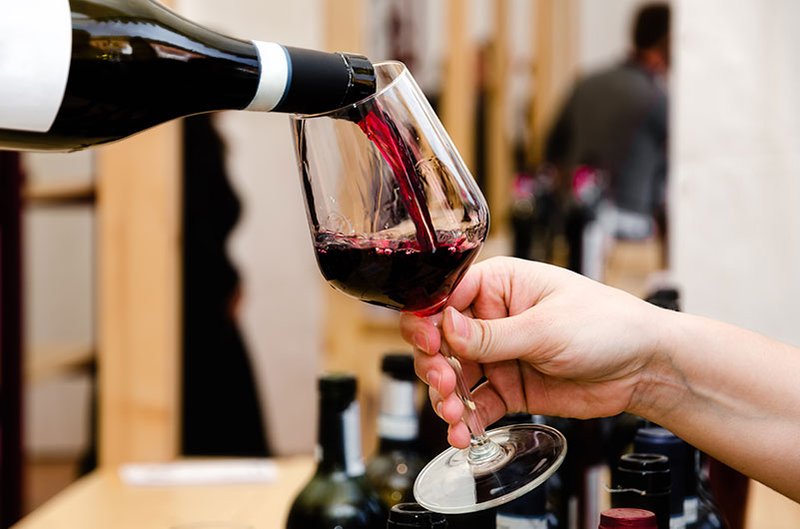
The rich, smooth, and concentrated wines produced by the Gaja winery have stolen the hearts of wine lovers, critics, and serious wine collectors. Be it a Gaja Barbaresco or a Brunello from Pieve Santa Restituta - each Gaja wine is worth trying.
If you want to start investing in fine wines, a fine Gaja wine is a great place to start. So sign up on Vinovest to start your wine investment journey.
